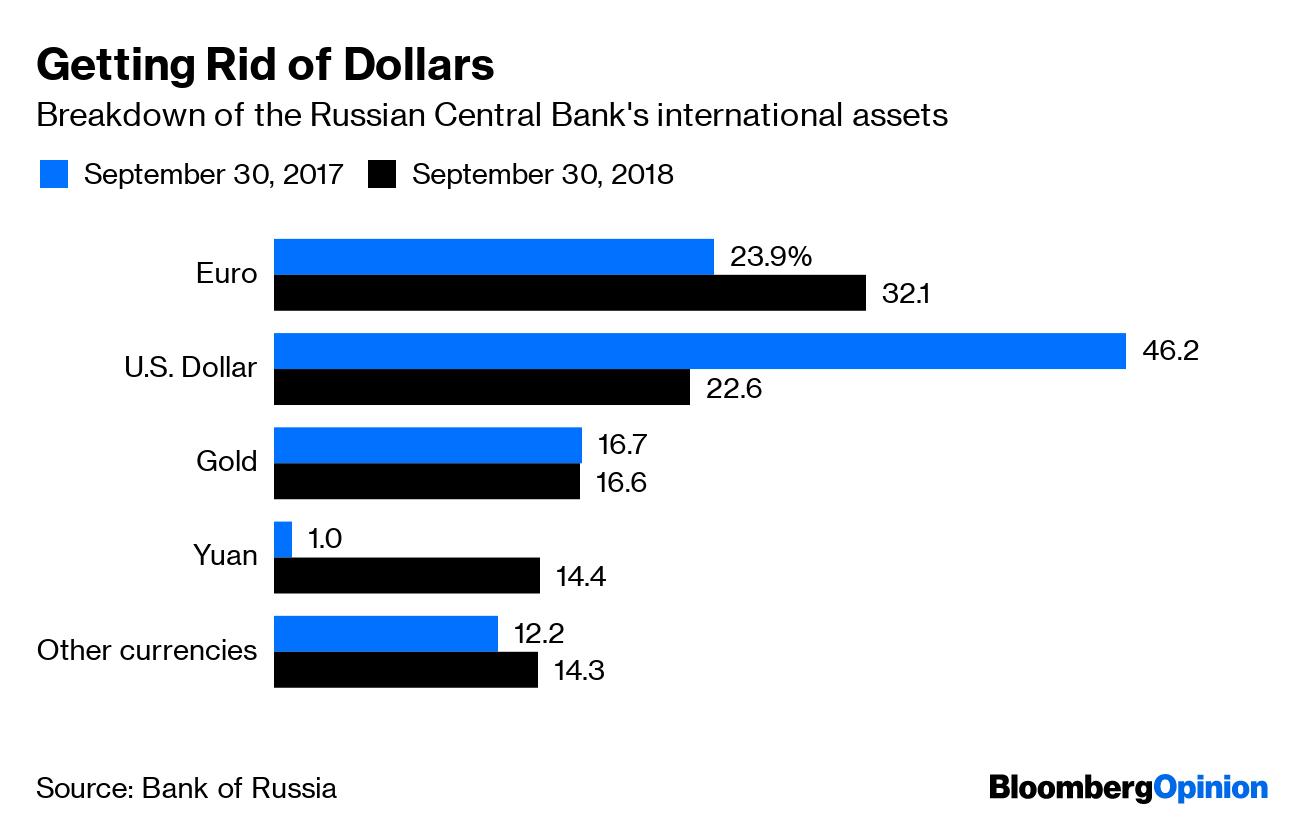Riyaz Patel
Russia has nearly halved the share of trade in US dollar terms with India and China, while continuing to reduce the use of the greenback in deals with the EU and BRICS countries.
It’s the first time the dollar has lost its leading position in Russia’s export trade with its main trading partners.
Russian Central bank figures show that at the end of the first quarter of 2019, more than 75 percent of Russian exports to India were paid for in rubles.
Local currency trade has nearly quadrupled compared to the same period last year and more than doubled since the end of 2018.
In transactions with China, the total share of rubles and euros overtook the dollar. Thus, transactions in euros skyrocketed from 0.7 percent in the first three months last year to the current 37.6 percent, while the share of rubles rose almost three percent to 9.6 percent.

Meanwhile, the share of the greenback over the same period dropped from more than 87 percent to 45.7 percent.
Central bank figures also show that Russia is successfully shifting away from the greenback in trade with allied emerging economies – Brazil, Russia, India, China, and South Africa (BRICS).
Since the end of 2018, settlements for Russian exports to these countries in dollars dropped by nearly a third to 40.6 percent, while ruble and euro transactions jumped to 23.1 and 30.7 percent respectively.
The euro’s share has been gaining on the dollar in trade between Russia and the European Union too.
The euro now accounts for 42.3 percent of EU-Russia trade, against 46.6 percent in US dollars.
Russian Economic Development Minister Maxim Oreshkin had previously called for a switch to the euro in bilateral trade, as neither Russia nor EU states are dollar-based countries.

Apart from ditching the dollar in trade, the Central Bank of Russia has been dumping its holdings of US debt, cutting its stockpile of Treasury bills to a 12-year low.
Last month, Wall Street bank JP Morgan Chase predicted the end of US dollar dominance in the near future.
The bank said that the global economy will shift to “a system where Asia wields greater power,” eroding the greenback’s reserve currency status and setting the grounds for its replacement as the dominant international currency.


